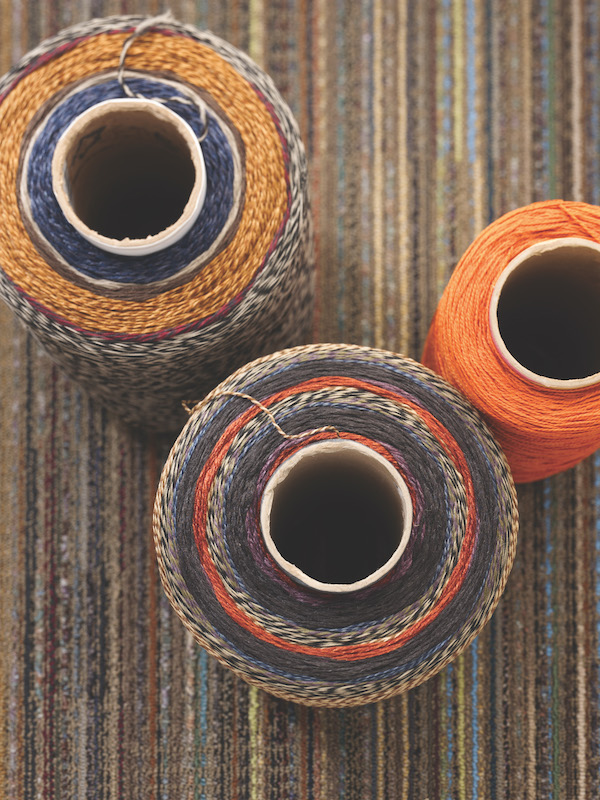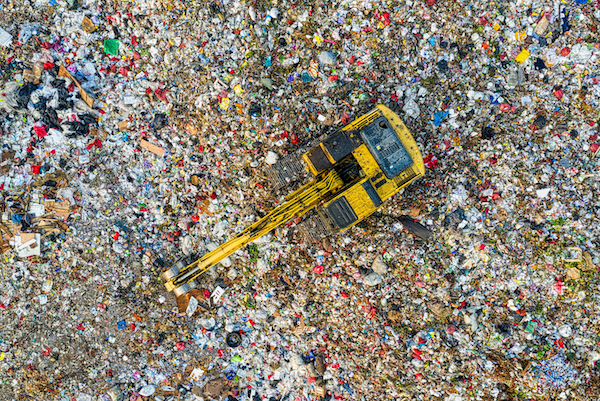This article is sponsored by Mohawk Group.
Nature designs all living things to return to nature, but humans have yet to wholly design our products for disassembly and circularity. Historically, we have done the opposite by making waste that nature cannot reclaim. This is at odds with nature’s ecosystems and is polluting the planet, causing much destruction. After more than 200 years of manufacturing objects and 90 years of making things from plastic, humanity has yet to solve this on a grand scale.
The world is facing a crisis of consumption, stemming from a culture of convenience that emerged after World War II. This culture celebrated disposable goods, leading to a "Throwaway Society" where we don't need to care for or clean up things. The growing middle class embraced this lifestyle, and the abundance and low cost of plastic goods made it acceptable to discard them. Nearly 70 years later, overproduction and consumerism have led to a waste management crisis, exacerbated by healthy global economies that increase consumption. Manufacturers rely on consumers to keep buying, leading to the idea that something new is better and that repairing is less valuable than replacing.
To reverse this crisis of consumption, we must look to a different future, one where we shift towards reducing or rejecting waste.
A post-disposable future
In response to the United Nations' Sustainable Development Goals, Leyla Acaroglu, a sustainability design leader, sociologist and educator from Australia, has put forth the concept of a Post-Disposable Future. This movement aims to redesign systems that create waste and contribute to resource depletion and pollution. By embracing circularity and integrating closed-loop systems, both industry and individuals can work towards a future of responsible consumption and production. You can join the PostDisposable movement today by accessing its open-source toolkit online. This is just one of many ways we can make a positive impact.
As a designer, I am particularly intrigued by the international organization called "What Design Can Do" that seeks to empower creatives to use our skills to solve the big, wicked problems of our time, waste being one of them. In 2021, it established a "No Waste Challenge," a global competition seeking design solutions to reduce waste and address our production and consumption cycles. The competition was announced with this quote from legendary designer and intrepid optimist Bruce Mau: Design got us into this mess, now it needs to get us out of it.
The competition asked applicants to submit design solutions within one of three categories:
- Take Less — explored over-consumption leading to excessive waste.
- Make Better — addressed a product’s environmental impact in context of waste reduction through low-impact materiality and circularity.
- Handle Smarter — looked at ways for waste to be managed and valued equitably and sustainably.
Waste as a value add
There are several reasons why we may want to look at waste as valuable. As virgin raw materials become scarce over time and the fluctuating state of global affairs, we will need to place greater value on waste as a resource to replace those virgin materials. When they become rare, waste will be seen as a desirable material of the future.
We also need to think about the objects around us. Could an object have more than one life beyond its original purpose? Circularity proposes that every object should be considered as food for the next one, and we should respect the labor that goes into making our goods. Industrialization has disconnected us from makers and workers, leading to wastefulness. Knowing the stories of those who made our stuff would foster emotional attachment and discourage waste.
Designers are creating innovative ways to tackle the waste problem by using existing materials as raw materials. As more designers get involved, a new industrial revolution could emerge, potentially disrupted by both AI and waste interventions by designers. Here are three innovators that have captured my attention:
The Tatami Refab Project, created by six Japanese industrial designers, aims to repurpose traditional tatami mats made of natural grass fibers, which have declined in use as flooring in Japan. The design team developed a new material made from powdered grass from old tatami mats and a biodegradable resin, used to 3D print new objects such as stools, tables and lighting. The collection combines traditional Japanese aesthetics with modern design while repurposing waste materials.
Dutch designer Dirk Van der Kooij uses proprietary technology to transform items such as discarded CDs and used refrigerators into furniture. His "Melting Pot" table is made from plastic waste from his own studio. The table is designed as a monoblock for endless re-melting, re-sanding and polishing. No surface finishes are used, allowing for easy recycling in the future. This process shows the amazing potential to 3D print plastic waste, which Dirk has perfected in his studio.
Forite is a collection of recycled glass tiles made from discarded fridges, ovens and microwaves, providing a sustainable solution for a waste stream from e-waste. Forite addresses the scarcity of silica sand, needed to make new glass, by offering a new aesthetic created from the mix of glass found in e-waste. The tiles were developed over two years of research and development by Studio Plastique, Snøhetta architecture firm, and fabricator Fornace Brioni, aiming to create new value for architectural materials made from waste.

The Mixology Collection by Mohawk Group utilizes multi-colored yarns that are diverted from excess yarn lots and given new life in strikingly beautiful commercial carpet rather than being down-cycled into other industry products. Image courtesy of Mohawk Group.
Waste Not defined
So, what does it mean to "Waste Not"? We have all heard the old proverb "Waste Not Want Not," which means if we don’t waste our resources today, we will have what we need tomorrow. This applies to all resources: money, food, etc. Designers and creatives are at the forefront of developing sustainable solutions for waste mitigation and use. This fills me with hope.
And it begins with these six action items we can all do to Waste Not:
- Change our personal behaviors and consumption habits so that we no longer have a "Throwaway Society." Buy fewer things that last and know that this is better than having disposable objects.
- Hold the system accountable for making things that easily go to waste, and support legislation that reduces waste.
- Change design strategies to include designing for easy disassembly and include upcycling of more waste for any new products.
- Do not use single use items. Go package-free — reusable, refillable, repairable.
- Maintain/repair/restore objects, and find use for discarded parts
- Explore new models of ownership. Sharing. Finding the next owner instead of ditching something. Say no to the landfill.
As will.i.am from the Black Eyed Peas says, "Waste isn’t waste until we waste it."

